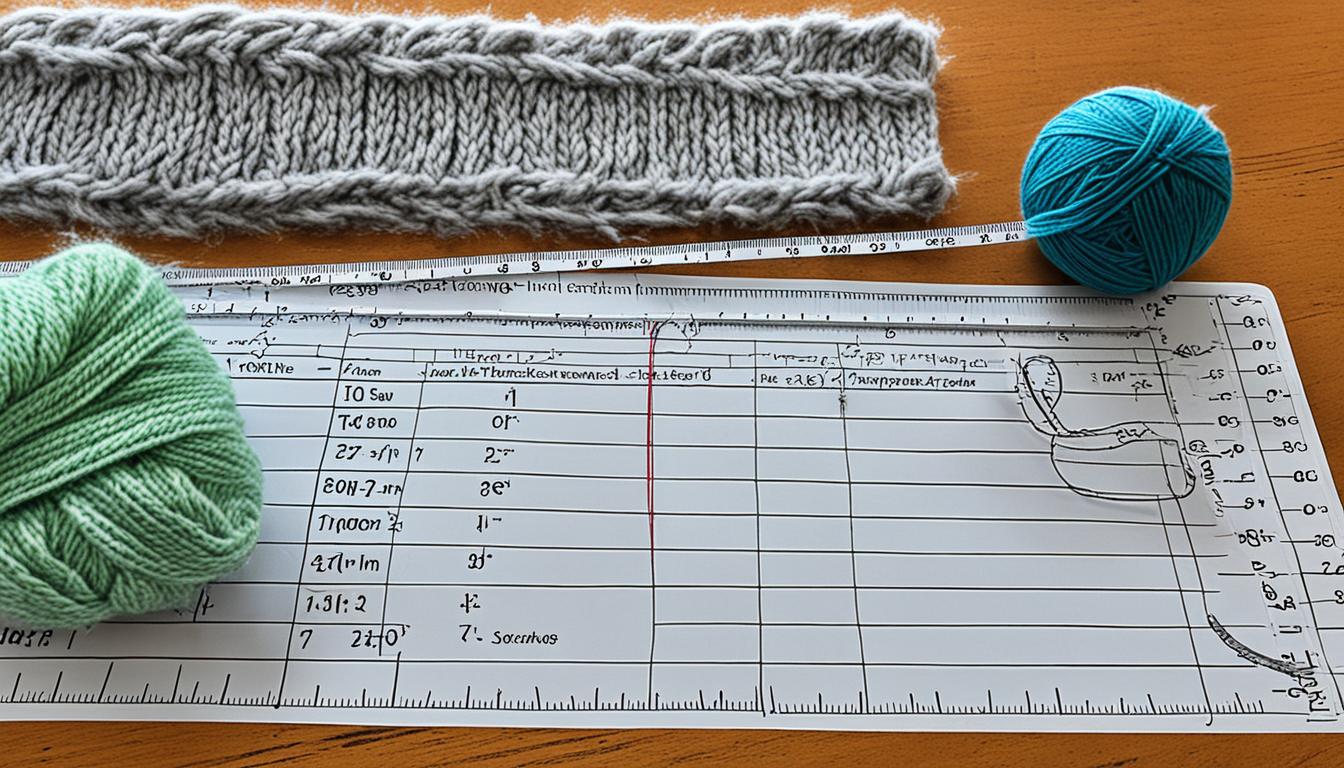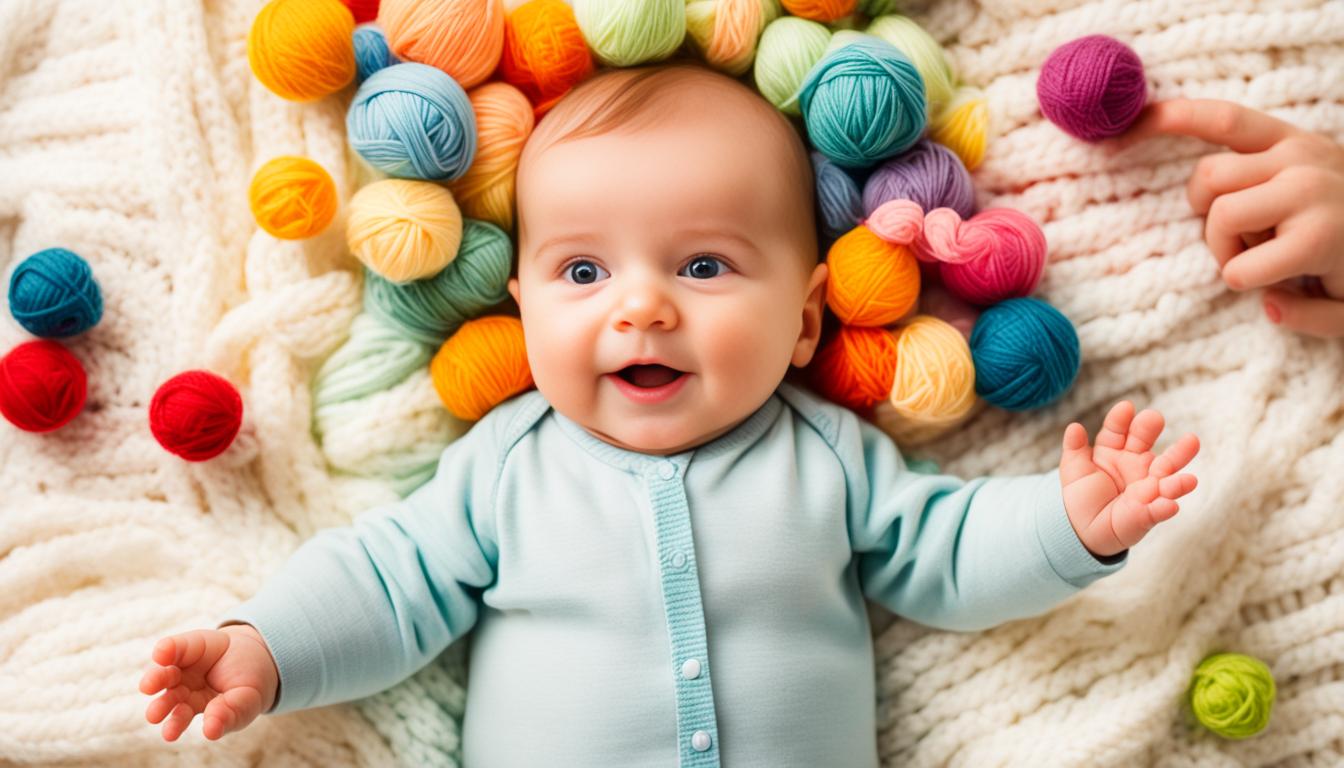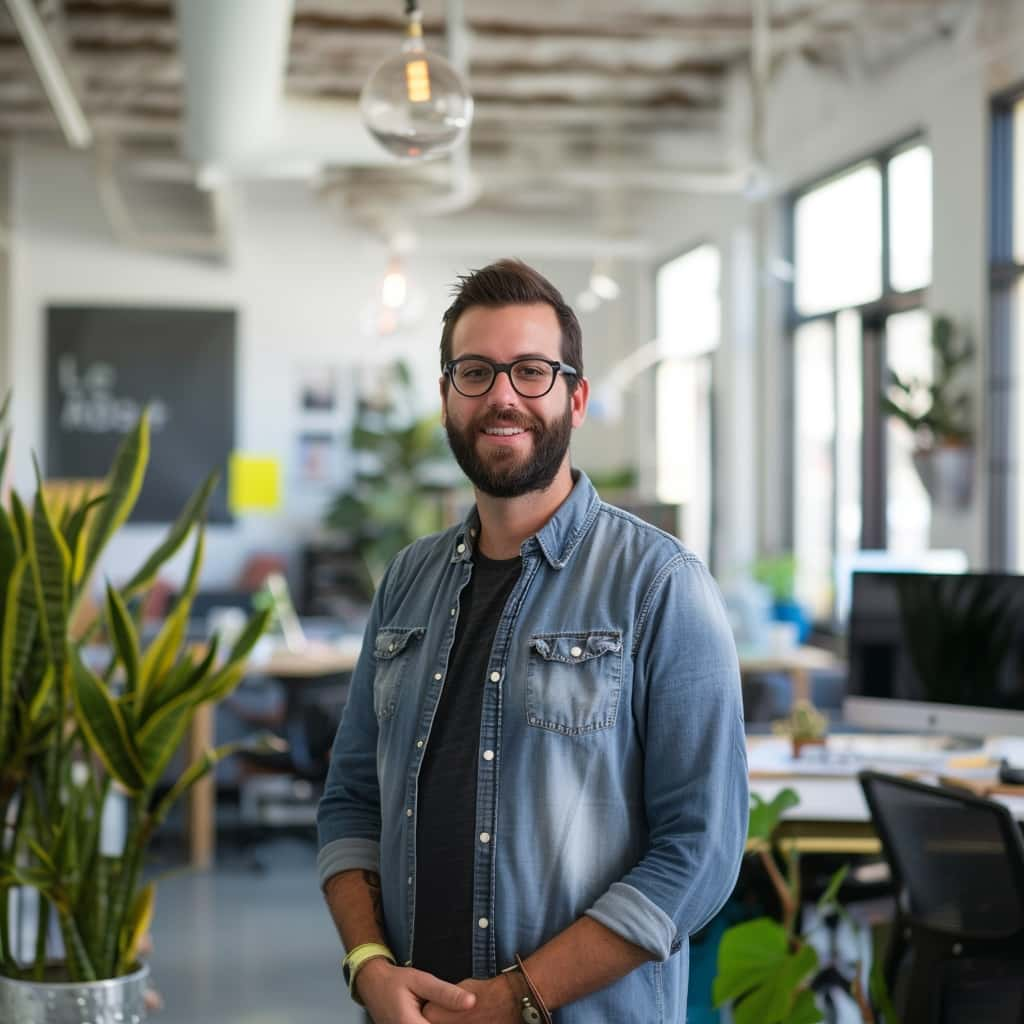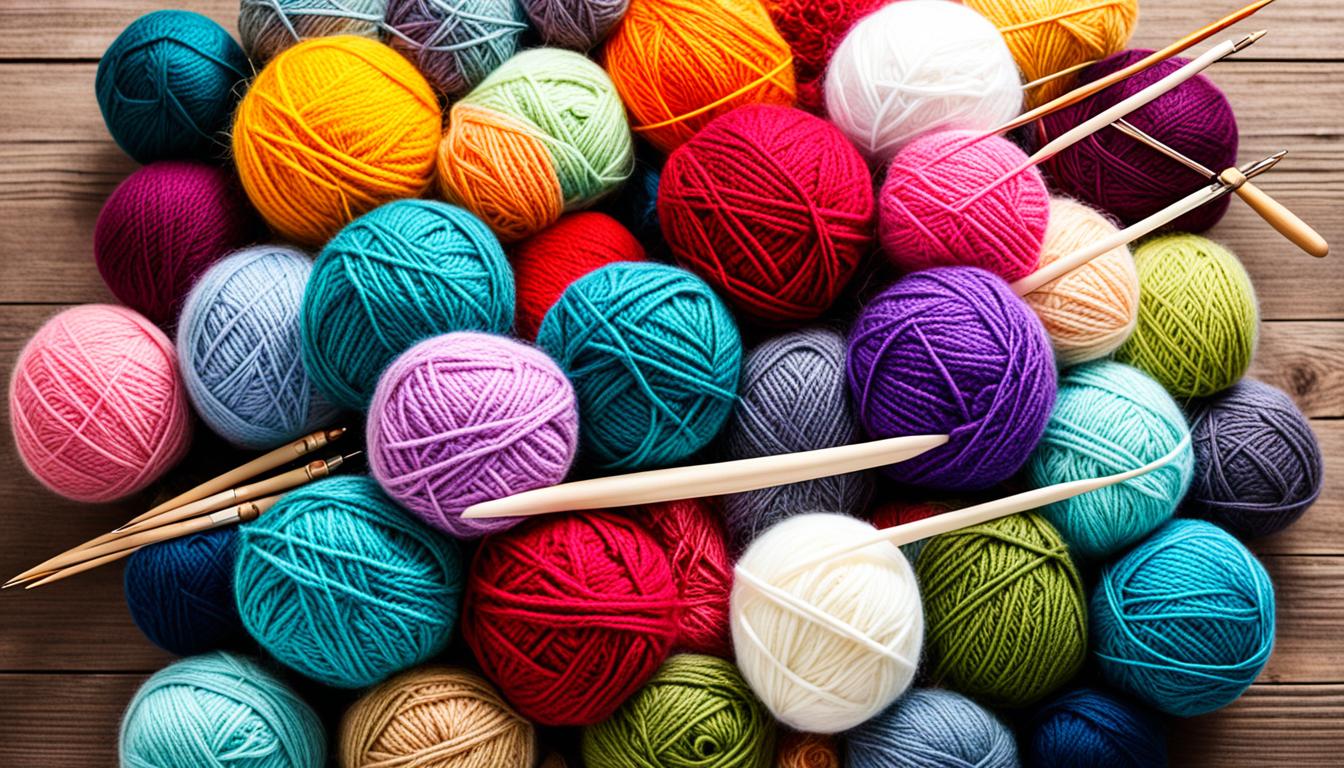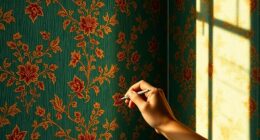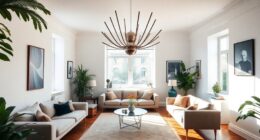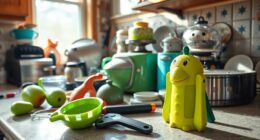Have you ever wondered how long the yarn should be for knitting a scarf? Is there a specific formula or method to determine the right amount? Today, we will unravel the mystery and guide you through the process of calculating the optimal yarn length for your cozy scarf project.
Key Takeaways:
- Calculating the yarn length for a scarf depends on factors like length, width, and pattern.
- Methods like weighing an existing scarf and calculating yarn requirements based on a swatch can give rough estimates.
- Yarn label information and professional patterns provide more accurate recommendations for yarn length.
- Consider yarn material, warmth, stretchiness, appearance, practicality, and weight when choosing the right yarn.
- Buying extra yarn is advisable to account for unforeseen issues and future repairs.
Weighing an Existing Scarf
One method to determine the yarn length needed for a scarf is by weighing an existing scarf of similar size and material. By using a kitchen scale, we can measure the weight of the scarf and then apply simple math to estimate the yarn needed.
For example, if we want to knit a scarf that is twice as long as the existing scarf, we would duplicate the weight. Similarly, if we want to knit a scarf that is 50% wider, we would multiply the weight by 1.5. This method provides a rough estimate, but keep in mind that it may not be accurate if you are using a different material or pattern.
Weighing an existing scarf can give us a starting point for estimating the yarn needed for our new project. It’s a quick and easy method that can provide a rough idea of the yarn requirements.
Calculating Yarn Requirements Based on a Swatch
When knitting a scarf, it’s important to know how much yarn you’ll need. One method to determine the yarn length is by knitting a swatch in the desired pattern and using it to calculate the yarn requirements. Here’s how you can do it:
- Start by knitting a 4×4 inch swatch in the pattern you plan to use for the scarf.
- Measure how much yarn you used to knit the swatch.
- Next, calculate the yarn needed for the scarf using the following formula:
(width of the scarf x length of the scarf / width of the swatch x length of the swatch) x yards in the swatch
This formula takes into account the width and length of the scarf, as well as the width and length of the swatch. By multiplying these values and then multiplying it by the number of yards in the swatch, you can determine the approximate amount of yarn needed for the scarf.
It’s important to use a yarn that is similar to the one you plan to buy, as different yarns have different weights and yardage. Additionally, consider buying extra yarn to account for any variations in tension or gauge that may occur when knitting the scarf.
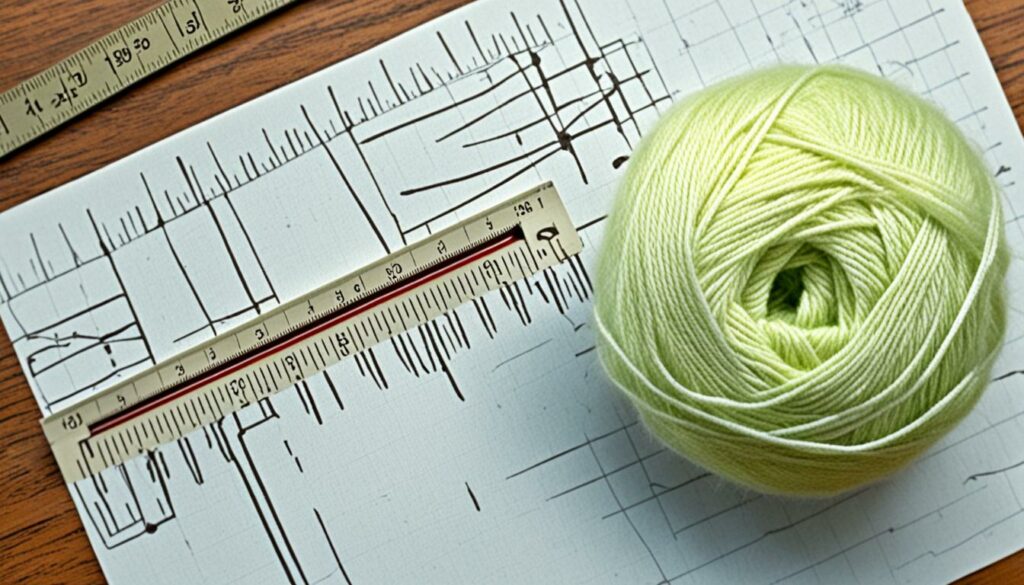
Calculating yarn requirements based on a swatch provides a more precise estimate, as it takes into account the specific dimensions of your scarf and the yarn you’re using. By following this method, you can ensure that you have just the right amount of yarn for your knitting project.
Using the Yarn Label Information
When choosing yarn for your scarf project, it’s important to utilize the valuable information provided on the yarn label. While the numbers for yarn requirements may be specified for a size 40 pullover or a short-sleeved top, it’s essential to keep in mind that these figures are not specific to your scarf project. However, there is another piece of information on the label that can be extremely helpful: the gauge.
The gauge listed on the yarn label indicates the number of stitches and rows required to create a 10×10 centimeter swatch. This information can be particularly useful when determining the amount of yarn needed for your scarf. If you have another yarn with the same gauge, you can knit a swatch using it and compare the number of stitches to the yarn you want to buy.
By comparing the gauge of your chosen yarn to the one specified on the label, you can determine a factor that allows you to accurately calculate the yarn needed for your specific scarf project. Simply multiply the number of stitches in your swatch by the factor derived from the comparison, and you’ll have a reliable estimate of the yarn length required.
However, it’s important to note that this method may not be entirely foolproof. Variations in tension and other factors can still impact the actual yarn quantity needed. To account for any discrepancies, it’s always advisable to purchase a little extra yarn to ensure you have enough to complete your cozy scarf.
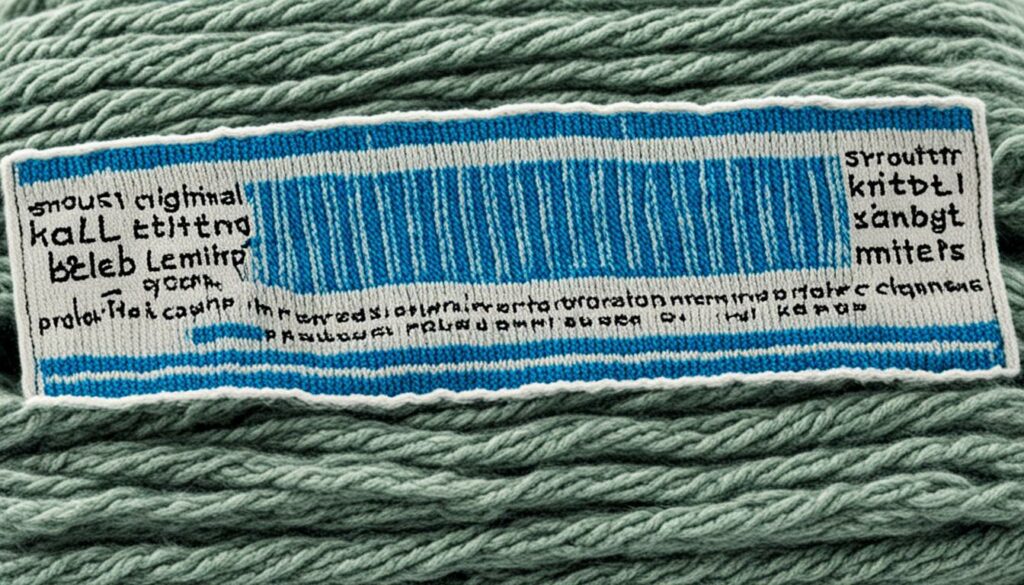
Expert Tip:
Remember to choose a yarn that closely matches the gauge of your intended project, as this will result in the most accurate yarn calculation. Additionally, consulting with a yarn store professional can provide valuable insights and guidance in selecting the perfect yarn for your scarf.
Considering Yarn Requirement Tables (with Caution)
Yarn requirement tables can be a helpful resource when determining the amount of yarn needed for your scarf project. These tables provide estimates for different yarn weights and project types, giving you a general idea of the yardage required. However, it’s important to use these tables with caution and consider other factors to determine a more accurate yarn length.
One thing to keep in mind is that yarn requirement tables often don’t take into account variations in scarf length and pattern. The estimates provided may not align with the specific dimensions of your project, resulting in either too much or too little yarn. It’s best to use these tables as a starting point and consider the length and pattern of your scarf to adjust the yardage accordingly.
Additionally, yarn requirement tables are based on standard yarn weights. These weights are categorized into different categories, such as lace, fingering, sport, worsted, and bulky. If the yarn you are using falls within one of these categories, the table can provide a more accurate estimate. However, if you are using a non-standard or unique yarn weight, the table may not provide the correct information.
In order to ensure a more precise calculation, it’s advisable to consider other methods such as weighing an existing scarf, calculating yarn requirements based on a swatch, or consulting the yarn label information. These methods take into account specific factors related to your project, resulting in a more accurate estimation of the yarn needed.
When using yarn requirement tables, always remember that they are just a guide and should be used as a reference rather than a definitive answer. Take into account the uniqueness of your project, including the scarf’s length, width, and pattern, to determine the most suitable yarn length. By considering all these factors, you can confidently embark on your knitting journey and create a beautiful scarf with just the right amount of yarn.
Example Yarn Requirement Table:
| Yarn Weight | Scarf Length | Yardage Estimate |
|---|---|---|
| Fingering | 60 inches | 500-800 yards |
| Sport | 60 inches | 400-700 yards |
| Worsted | 60 inches | 300-600 yards |
| Bulky | 60 inches | 200-500 yards |
Note: This table provides general estimates and may not be accurate for all scarf projects. Adjustments should be made based on the specific dimensions and patterns of your scarf.
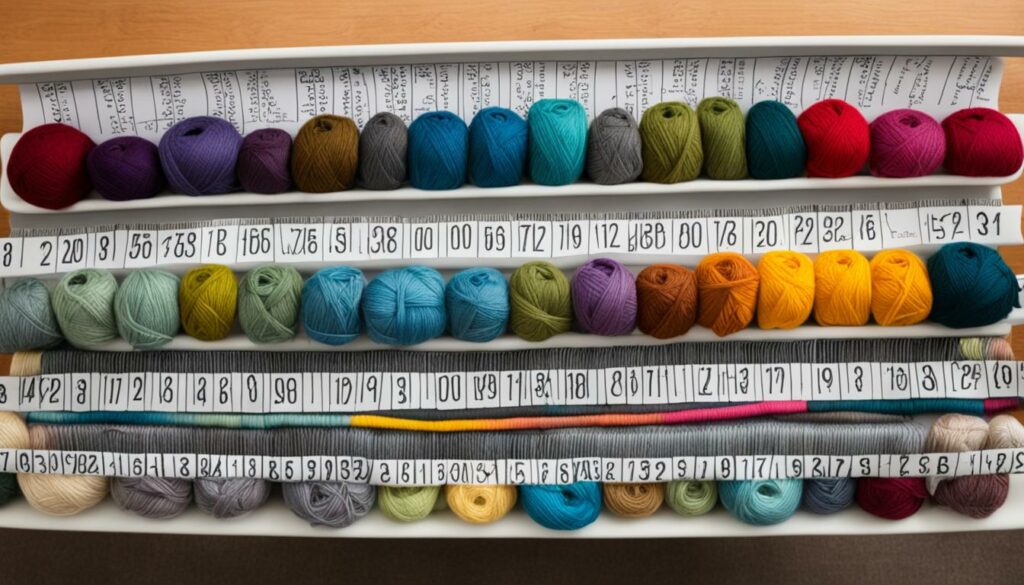
Following a Professional Pattern
When it comes to determining the yarn length for your scarf knitting project, one of the most reliable approaches is to follow a professional pattern. Professional patterns provide specific recommendations for yarn and also outline the amount of yarn required to complete the scarf. By following these instructions and using the recommended yarn, you can ensure that you have the right amount of yarn for your project.
Professional scarf patterns are ideal for knitting beginners who may not be familiar with estimating yarn requirements on their own. The patterns guide you through the entire knitting process, including the selection of yarn and the quantity you need to purchase. This takes the guesswork out of calculating yarn requirements and gives you confidence in your project.
By following a professional pattern, you can trust that the designer has already done the math and determined the optimal amount of yarn needed to achieve the desired size and length of the scarf. This saves you time and effort in calculating and estimating yarn requirements on your own.
“Following a professional pattern ensures that you have all the information you need to create a beautiful scarf and eliminates any uncertainty regarding the yarn quantity needed.”
Furthermore, professional patterns often come with additional guidance and tips on yarn preferences. The pattern may provide explicit yarn recommendations, suggesting specific brands or types of yarn that would best suit the design. These recommendations consider factors such as the yarn’s weight, fiber content, and texture, ensuring that you choose a yarn that is compatible with the pattern and will yield the desired result.
Whether you’re a novice or an experienced knitter, following a professional pattern offers a level of assurance and expertise. It not only gives you peace of mind in terms of yarn quantity but also provides guidance on color choices, stitch patterns, and finishing details. With a professional pattern, you can confidently embark on your scarf knitting project, knowing that you have the right yarn and all the information you need to create a beautiful finished piece.

| Benefits of Following a Professional Pattern |
|---|
| Provides specific yarn recommendations |
| Outlines the exact amount of yarn needed |
| Offers guidance and tips on yarn preferences |
| Eliminates uncertainty in yarn quantity estimation |
| Gives peace of mind in the knitting process |
By following a professional pattern, you can ensure that you have everything you need to start and complete your scarf knitting project with confidence. From accurate yarn recommendations to precise yarn requirements, a professional pattern is a valuable resource that guarantees a successful knitting experience.
Choosing the Right Yarn Material
When it comes to knitting a scarf, selecting the right yarn material is crucial. The material you choose will determine the properties of your scarf, such as warmth, breathability, stretchiness, durability, and care instructions. Let’s explore the three main types of yarn materials: protein-based fibers, plant-based fibers, and synthetic fibers.
Protein-Based Fibers
Protein-based fibers, such as sheep wool, alpaca, and cashmere, offer exceptional warmth and insulation. Sheep wool is a popular choice due to its natural warmth and ability to regulate body temperature. Alpaca, known for its softness, provides excellent warmth without weight. Cashmere, derived from cashmere goats, is incredibly soft and luxurious. These fibers are ideal for colder climates and cozy scarves.
Plant-Based Fibers
Plant-based fibers like cotton and linen offer breathability and lightness. Cotton is hypoallergenic, soft, and easy to care for, making it a perfect choice for all skin types. Linen, known for its cool and crisp feel, is great for warmer weather. These fibers are excellent for lightweight scarves and those with sensitivity to animal fibers.
Synthetic Fibers
Synthetic fibers, such as nylon and acrylic, are versatile and budget-friendly options. They often mimic the properties of natural fibers while offering durability and easy care. Nylon is known for its strength and resistance to wear, making it ideal for scarves that will undergo frequent use. Acrylic is soft, lightweight, and available in a wide range of colors, making it popular among knitters. Synthetic fibers are a great choice for those on a budget or seeking specific color options.
When choosing the right yarn material, consider the climate, occasion, and personal preferences. A woolen scarf may be perfect for winter, while a linen scarf is ideal for summer. Pay attention to the care instructions, as some materials require delicate handling. Ultimately, choose a material that aligns with your project’s needs and your desired knitting experience.
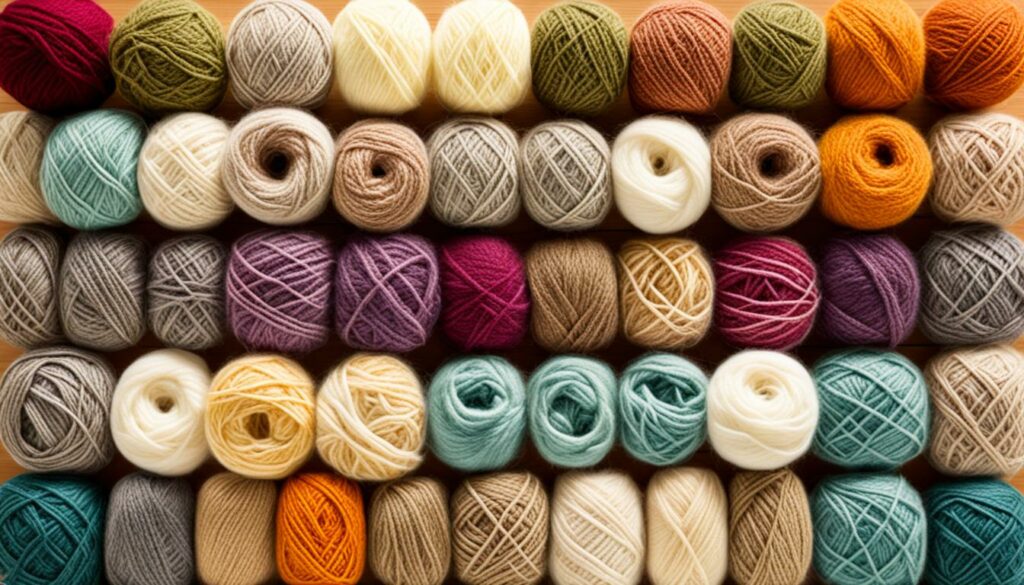
| Yarn Material | Properties | Best Use |
|---|---|---|
| Sheep wool | Warmth, insulation, breathability | Cold weather scarves |
| Alpaca | Softness, warmth, lightweight | Cold weather scarves |
| Cotton | Breathability, hypoallergenic | Lightweight scarves for all seasons |
| Linen | Coolness, crisp feel | Lightweight scarves for warm weather |
| Nylon | Durability, strength, easy care | Everyday scarves |
| Acrylic | Softness, lightweight, color variety | Budget-friendly scarves |
Consider the properties of different yarn materials and choose the one that best suits your project’s needs and your personal preferences. Whether you opt for the warmth of protein-based fibers, the breathability of plant-based fibers, or the versatility of synthetic fibers, selecting the right yarn material will ensure a successful and enjoyable knitting experience.
Considering Warmth, Stretchiness, and Appearance
When choosing yarn for your scarf, it’s essential to consider its warmth, stretchiness, and appearance. These factors can greatly impact the overall comfort and visual appeal of your finished project.
Warmth is often associated with the softness of the yarn. Thinner fibers tend to create more insulating air-pockets, making them suitable for colder climates. However, it’s crucial to take into account the intended use of the scarf. For example, if you want a lightweight accessory for transitional seasons, a less warm and more breathable yarn, like cotton or linen, might be a better choice.
It’s important to select a yarn that not only keeps you warm but also allows your skin to breathe, ensuring comfort throughout the day.
The stretchiness of the yarn is another vital consideration, especially if you’re incorporating stitch patterns that require elasticity or if you prefer a more fitted scarf. Natural fibers like wool and alpaca have inherent stretch, which can enhance the drape and fit of the finished scarf. Synthetic fibers, on the other hand, may lack stretch but offer other advantages, such as durability and ease of care.
When it comes to the appearance of the yarn, several factors can contribute to the overall look of your scarf. The fiber halo, which refers to the fuzzy aura around the yarn, can add softness and a delicate touch to your project. Wool and alpaca fibers tend to have a more noticeable halo, while synthetic fibers typically have a smoother surface.
Another aspect to consider is stitch definition. Some yarns allow stitches to stand out more clearly, showcasing intricate patterns and textures. If you’re working on a project that requires intricate stitch work, choosing a yarn with excellent stitch definition can help highlight your craftsmanship.
Remember, the appearance of your yarn can greatly influence the final aesthetic of your scarf, so choose a yarn that aligns with your desired outcome.
By considering the warmth, stretchiness, and appearance of the yarn, you can select a material that not only meets your practical needs but also enhances the overall look and feel of your finished scarf.
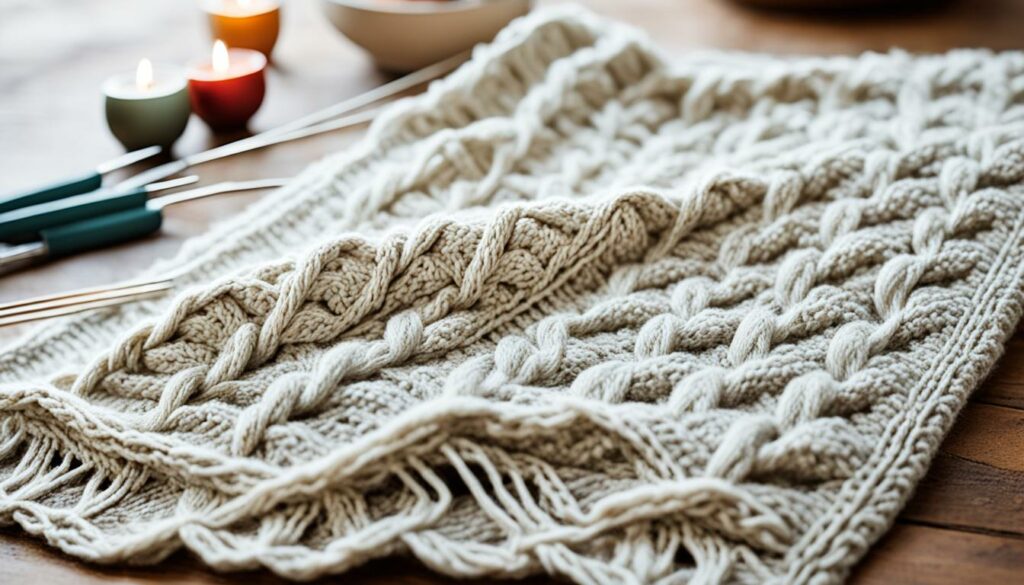
Comparison of Different Yarn Qualities
| Yarn Quality | Warmth | Stretchiness | Appearance |
|---|---|---|---|
| Wool | Very warm | Good stretch | Fiber halo, good stitch definition |
| Alpaca | Very warm | Moderate stretch | Fiber halo, good stitch definition |
| Cotton | Less warm | Low stretch | Smooth appearance, limited halo and stitch definition |
| Acrylic | Varies based on thickness | Low stretch | Smooth appearance, limited halo and stitch definition |
Practical Considerations and Yarn Weight
When choosing the right yarn for your scarf, practical considerations are essential. These considerations include machine washability, durability, yarn weight, speed of knitting, and the drape of the fabric.
Machine washability is an important factor to consider, especially if you prefer low-maintenance care for your scarf. Look for yarn options labeled as “superwash,” which can be easily washed in a machine without fear of shrinking or felting.
Durability is crucial, particularly for scarves that are frequently worn or used. Consider choosing yarn made from durable materials such as synthetic fibers or blends that can withstand everyday wear and maintain their shape.
The yarn weight affects various aspects of your knitting project. Thinner yarns, such as lace or fingering weight, are ideal for creating delicate fabrics with excellent drape. On the other hand, chunkier yarns, like bulky or super bulky weight, provide warmth and structure to your scarf.
The choice of yarn weight also impacts the speed of your knitting. Thicker yarns require fewer stitches and rows, enabling you to complete your project more quickly. Thinner yarns, however, often result in more intricate patterns and finer details, which may take longer to knit.
The drape of the finished scarf is determined by the yarn weight and the fiber content. Thicker yarns tend to create a stiffer, more substantial fabric, while lighter weight yarns produce a softer, more flowing drape. Consider the desired effect you want to achieve when selecting your yarn.
By considering practical factors such as machine washability, durability, and yarn weight, you can choose a yarn that is not only aesthetically pleasing but also suitable for the functionality and longevity of your scarf.
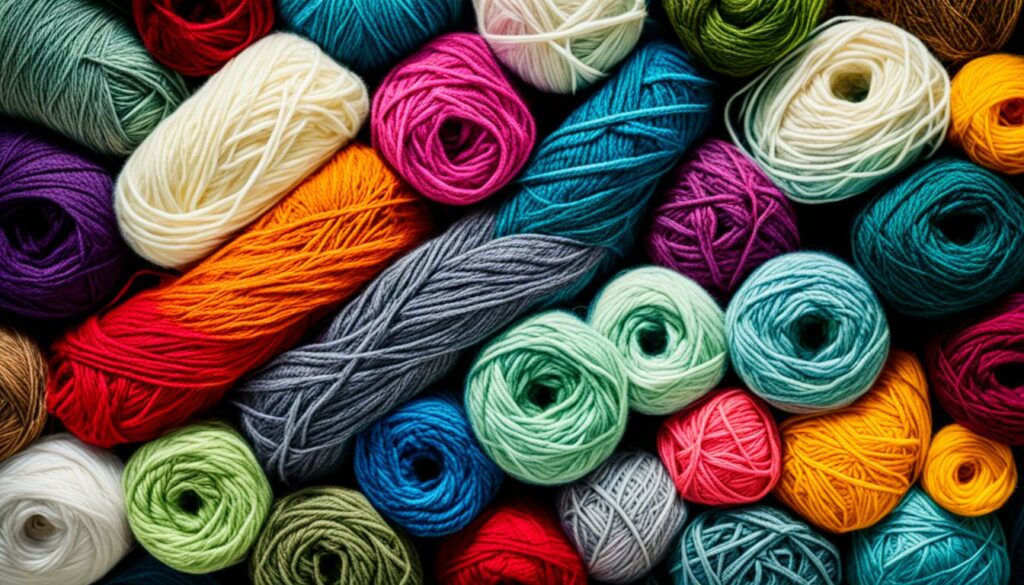
Yarn Weight Comparison
| Yarn Weight | Description | Recommended Needle Size | Stitches per Inch |
|---|---|---|---|
| Fingering | Very fine weight, often used for delicate lace projects | US 1-3 (2.25-3.25 mm) | 7-8 |
| Sport | Lightweight yarn, great for baby garments and lightweight accessories | US 3-5 (3.25-3.75 mm) | 6-7 |
| Worsted | Medium weight, versatile and commonly used for a wide range of projects | US 7-9 (4.5-5.5 mm) | 5-6 |
| Bulky | Thick yarn, ideal for cozy winter accessories and quick projects | US 10-11 (6-8 mm) | 3-4 |
| Super Bulky | Extra thick, perfect for chunky scarves and blankets | US 13+ (9+ mm) | 1-2 |
Conclusion
In conclusion, determining the optimal yarn length for knitting a scarf requires careful consideration of various factors. These include the length and width of the scarf, the pattern being used, the type of fiber, and practical considerations such as warmth and durability. While there is no exact formula, several methods can help estimate the yarn requirements. These include weighing an existing scarf, calculating based on a swatch, using yarn label information, consulting yarn requirement tables (with caution), and following professional patterns.
It is also advisable to purchase a little extra yarn to account for unforeseen issues or future repairs. By taking these factors into account, you can ensure that you have just enough yarn for your cozy scarf project. Remember, the key is to strike a balance between having enough yarn and avoiding wastage. Happy knitting!
